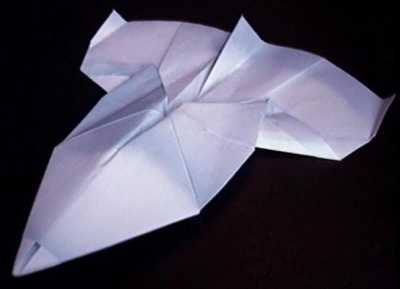Most of us remember that one time or another during out childhood, we ripped out a sheet of notebook paper and used it to fashion a paper airplane due to sheer boredom, as a time-passing hobby, or because we were looking for a way to cause mischief in the classroom. Whatever the reason behind our aviation efforts, we all know the frustration that stems from making a defective paper airplane. However, when we were children, we did not have this widespread information database known as the internet to refer to for answers to our all-important questions. But now that times have changed, anyone can learn how to do just about anything, such as constructing far-flying airplanes from regular notebook paper.
The History of Paper Airplanes
Folded airplanes made from paper products comes from an unknown origin with most experts theorizing the art is based from either Japanese origami or the Chinese practice of folding paper gliders. Wherever paper airplanes were first made, there is clear documentation that proves they have been in existence for more than 1,000 years.

Many notable people and inventors who actively worked to pioneer aircraft flight have utilized the airplanes models crafted from paper as a guide to building large-scale flying machines. Leonardo Da Vinci recorded his various experiences with parchment paper airplanes and in the 19th century, a British engineer named Sir George Cayley explored some of his aviation ideas through paper plane models.
Even the Wright Brothers, fondly known as the “founding fathers of flight,” constructed numerous paper airplanes that they would put to the test in their Wright Flyer, which was wind tunnel they used in order to conclude how various forces could be manipulated to control an airplane during flight.
Over time, several other designers have found ways to improve upon the basic paper airplane to utilize it as an effective tool for modern aviation. In 1930, Jack Northrop, Lockheed Corporation’s co-founder, used paper airplanes as test models for future, larger aircrafts.
Crafting Your Notebook Paper Airplane
Begin by placing a smooth sheet of notebook paper down on a hard, flat surface such as a coffee table or kitchen counter. Then, the notebook paper will need to be folded in half, making the crease fall long-ways in the center of the paper. Once you have made a nice crease, unfold the notebook paper.
Now, take the right corner and fold it so that the edge meets the center of the notebook paper. Follow this step for the paper’s left side also. This will cause the paper to become arrow-shaped. Once this two-part step is complete, you will once again take the right side of your notebook paper and fold it to meet the center crease. Repeat this step on the left as well. The semi-finished product will give the paper a triangle tip.
You will now rotate the notebook paper sideways and fold it in half where the previous crease already exists. Take the bottom right of the notebook paper and fold it going towards the top in order to construct the wing. Flip over the almost-made airplane and repeat this instruction to fashion the other wing.
You now have a paper airplane crafted from a simple sheet of notebook paper that when folded correctly, will fly an impressive distance. If you want to extend its flying distance and happen to have a paper clip laying around, you can provide your plane with added weight, stability, and flying power by attaching it to the airplane’s front end.